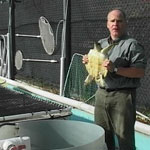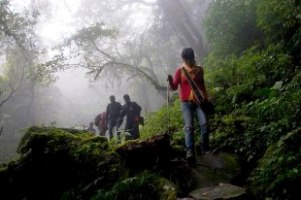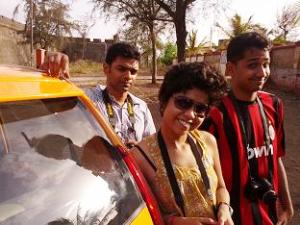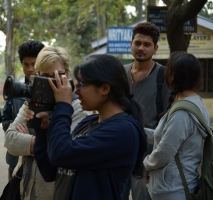In the last four days, Bangalore based newspapers have been running news stories on how the Bangalore Metro’s proposed rail line's Phase II stretch will displace 160 people in an apartment complex, an IT company’s office, a shopping mall and owners of 95 other properties in an upmarket area in South Bangalore. An English language daily's headline screamed “160 flats face demolition as BMRC changes Metro track”. BMRC means Bangalore Metro Rail Corporation.
In the project's initial proposal, the rail line had to cut through a well-known large government heart hospital’s parking lot. The hospital does heart surgeries at low cost or for free. Running trains near the hospital meant hurting patients' health. That is why, the design was altered. All efforts are being made by the affected people including the very supportive press to avoid this impending catastrophe.
This news report though, took me back in time when I visited Manibeli village as a student in 1993. From the tiny village Manibeli, which now lies buried under water, you could see a monstrous structure being built across the river Narmada. It was amazing to see the expanse of water the Sardar Sarovar dam could hold, and how it raised hopes and promise of a lifeline to thousands of farmers and drought hit villages downstream the river in Gujarat. Unfortunately, the same dam displaced hundreds of villages in the upstream area.
Thousands of families got uprooted from their homes and lost their livelihood. It is likely that many of displaced villagers ended up in slums in nearby cities.
Similar stories play out across India every day. Large mining projects, power stations, highway projects, special economic zones and huge residential complexes in our cities and rural areas are ripping the fabric of community life, and destroying common properties like lakes, river valleys, grazing lands and forests.
In most cases, there is no relationship between the beneficiaries and the affected communities. Why should villages up in the hills in Tehri make way for a dam which will bring water to Delhi? Urban India that mostly benefits from such projects ignores these impacts as they are not adversely affected. The affected community is silenced, ‘as their sacrifice is for the larger good of the country’. Within cities, a similar drama is played out. Roadside trees get chopped and buildings are brought down to widen the roads to make way for more and more private vehicles and parking space.
The media is very selective in highlighting issues. Suddenly, the plight of 160 flat owners in Bangalore becomes very important, while the fact that thousands of farmers who will lose their lands in the Devanahalli region near Bangalore because of a special IT zone does not merit attention. This news report was carried four days back and yet no newspaper has tried to find out from the farmers if they are okay with losing their land to the proposed IT zone. Nor has the media grilled government machinery to understand if such an IT zone is needed for Bangalore at all. Bangalore, is bursting at seams due to unregulated growth. The city can barely supply drinking water once a week to all its citizens. How will water be supplied if this additional zone comes up?
The end product or result of all large-scale projects in India is the creation of a huge number of internal refugees and destruction of fertile land, forests and wildlife. Indian bureaucracy, politicians and the urban elite who control most of these processes have chosen to remain blind to the problem. It is time every one of us understood that the present mode of development has huge side effects. What India needs is not large projects and large-scale displacement but adopting large-scale conservation of the remaining water bodies, river valleys, fertile lands and forests.
Instead of adopting the resource intensive lifestyles and the development model of the West, urban India should take the lead in questioning the displacement led development and think of ways to lower their footprint on the rest of India. This change has begun.
A few people in Bangalore that immediately come to my mind are the likes of S Vishwanath and his wife Chitra, and Shivakumar who lead by example. They have designed their houses which are self sufficient in water, electricity and vegetables. Interestingly, Shivakumar has not paid any water bills to the Bangalore Water Supply Board for the last 19 years! People like him tap rain and abundant sunshine on their rooftops using rainwater harvesting systems, solar heaters & lights and grow vegetables on their roofs. They also motivate and help several others around them adopt such practices thereby making a difference to the environment. But more of us need to join their bandwagon.
Small individual attempts like these may not immediately make a big dent into the massive environmental trouble that India faces. But when all of us adopt such small efforts on a large-scale, this will reduce the pressure on resources outside our cities and towns. Most importantly, adopting such individual practices helps us develop a mindset which believes in achieving more with less resources and being frugal in using natural resources.
We need to take environment conservation beyond individual actions. Our city planning, management of farmland and forests, how we operate mines, garbage disposal, modes of commuting and transportation, all of it needs a huge revamp. We need to put environment and people’s welfare at the centre of this discourse rather than industrial profits and greed. For India and Indians to prosper in the 21st century, I think a change in paradigm is desperately needed! Anyone to lead the change?







































